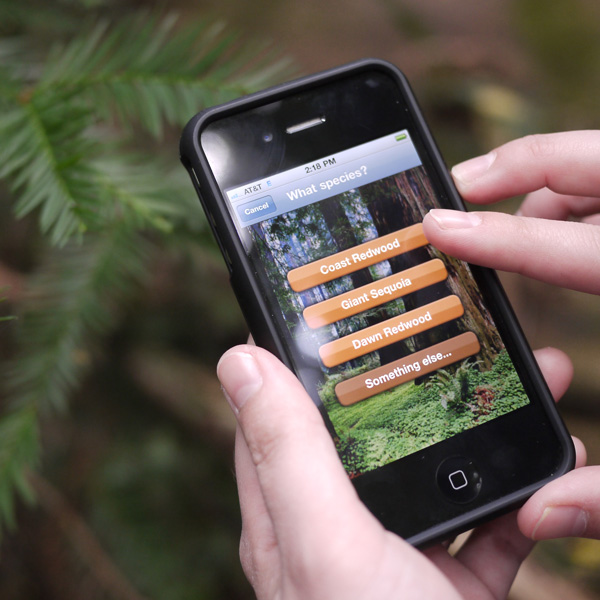
We’re not the only ones who think iNaturalist is pretty cool. Save the Redwoods does, too.
The San Francisco-based conservation organization has teamed up with the biodiversity-tracking social networking site to create an iPhone app exclusively for monitoring redwood and giant sequoia forests. It’s called Redwood Watch. It uses the same technology as the iNaturalist iPhone app, aggregating data on a special Redwoods page within iNaturalist.org.
“We hope that this will help us have a better idea of where redwoods are, and then we can use that data to understand what kinds of conditions they can tolerate,” said Emily Limm, director of science and planning for Save the Redwoods.
Like the iNaturalist iPhone app, Redwood Watch is a free download that allows users to take field observations and easily upload them to a central online database. There’s an online tutorial explaining how it works.
Limm said the hope is that members of the public will download the app onto their iPhones, and use it when they’re out hiking and spot redwoods, sequoias, and a list of other forest organisms the organization is hoping to track. These field observations from “citizen scientists” will help researchers gain a clearer picture of where the trees actually are throughout California.
“It’s impossible for us to collect all this data ourselves,” said Limm. “If people are engaged, they can help us refine our understanding of where the trees are in their natural ranges and where those edges are.”
But the project isn’t limited to trees in their native California habitats. Limm says that data about redwoods from botanical gardens and forestry projects around the world is just as important because it can yield clues about the range of environments the trees can tolerate. That could help scientists understand how the species may be affected by climate change, which can help land managers and conservation organizations plan for the future.
There’s more about the project, and about California’s redwoods, from Paul Rogers at Mercury News. And see KQED’s QUEST for more about redwoods and climate change.
